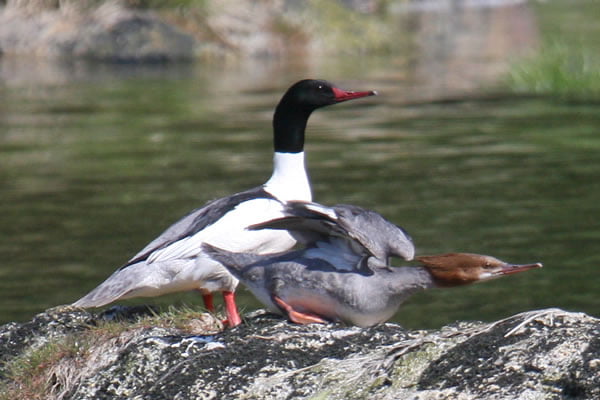Monitoring of Non-breeding Sea Ducks on the Great Lakes

Project Number: 161
Year Funded: 2020
Lead Institution(s): US Fish and Wildlife Service
Project Lead: Beth Ross
Collaborator(s): Auriel Fornier (Forbes Biological Station), Michael Schummer (SUNY-ESF), Jacob Straub (SUNY Brockport), Shannon Badzinski (CWS), Doug Tozer (Bird Studies Canada)
Location: Ontario, CA and Great Lakes
Focal Species: Bufflehead (Bucephala albeola), Common Goldeneye (Bucephala clangula), Long-tailed Duck (Clangula hyemalis), Common Merganser (Mergus merganser), Hooded Merganser (Lophodytes cucullatus), Red-breasted Merganser (Mergus serrator), Black Scoter (Melanitta americana), Surf Scoter (Melanitta perspicillata), White-winged Scoter (Melanitta delgandi)
Project Description: Sea duck use of the Great Lakes, particularly the Lower Great Lakes (Lakes St Clair, Erie and Ontario), during spring migration, fall migration and winter has increased considerably over the past few decades. Limited information about sea duck abundance and distribution in the Great Lakes region, as well as the connectivity of the Great Lakes population to other populations hampers harvest and habitat management and conservation. To help inform management and conservation of sea ducks on the Lower Great Lakes, we propose developing a model to quantify population responses to environmental conditions from 1980 to present. Using this model, we will be able to identify key habitats and areas of high use for sea ducks, likely by species or species group (e.g., scoters), on the Lower Great Lakes. Count data will be linked to environmental covariates of importance (e.g., ice cover, temperature) to estimate relationships and make predictions. Once developed, we use the model to predict future population abundance and areas of importance under various scenarios of climate change. Based on input from stakeholders through an SDM approach, we then use model predictions to develop future monitoring scenarios.
Project Reports:
